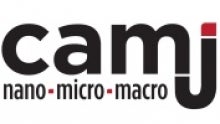An undergraduate course on “welding”, by Marc Hillier, began at Waterloo in the early 1960s, shortly after the University was founded.
Welding research at Waterloo began about 1967, when David Burns arrived from Imperial College, where he had worked on design of welded structures, such as liquefied natural gas ships. At Waterloo, he extended these studies, along with Roy Pick, Udo Mohaupt and Steve Lambert, all of whom later became faculty members at Waterloo.

Welding and joining metallurgy at Waterloo began around 1969, evolving from earlier studies on solidification by Paul Niessen and Hugh Kerr. Studies of solders, brazing, spot welding and arc welding were carried out during the 70’s, 80’s and 90’s by Hugh Kerr and David Weckman and their students. Collaboration between the materials and design groups on welding topics also was common during this period. The single optional undergraduate course on “welding” was taught jointly by the two groups, encompassing welding processes, metallurgy and design.
A Master’s Program, specializing in welding, was offered jointly with the University of Toronto from the late 70’s to mid 90’s, when budget cuts cancelled all off-campus programs in Engineering
The founding of Provincial Centres of Excellence in the mid 80’s led to major funding for laser welding and for the automation of arc welding, involving Hugh Kerr, David Weckman, Jan Huissoon, Sanjeev Bedi and others, and many students. Walt Duley came to Waterloo (Physics) in the 90’s, with an established reputation in lasers and laser welding. Meanwhile, the reputations of the welding design faculty, plus the addition of Gregory Glinka, provided funding for large industrial projects, such as full scale testing of partially completed pipeline welds, and fatigue testing of subway car carriages.
The budget cuts resulting from the “Common Sense Revolution”- $18 million for Waterloo — led to an early retirement scheme and the loss of many faculty. However, that spawned the idea of the “Welding Specialization” within Mechanical Engineering, to educate mechanical engineers about welding and joining engineering. In 1998, after raising sufficient industrial money, the department hired Norman Zhou in a new position. New courses were added on welding processes, metallurgy and design.
Since his arrival at Waterloo, Norman Zhou has become a Canada Research Chair Tier II chair in Microjoining, and has interacted with companies throughout North America and Asia on a very wide range of joining topics, along with Hugh Kerr, David Weckman, Steve Corbin and others. His Chair also permitted the hiring of Michael Mayer, thus strengthening the research on sensing and its applications to joining. Other new faculty members also undertake joining research, such as Amir Khajepour.

- carry out fundamental research related to welding, joining, and industrially-supported applications
- achieve collaboration and coordination in joining research
- enhance the visibility and credibility of joining research through external collaborators, funding agencies and industrial users of joining
- communicate with students, public and industries regarding opportunities with and importance of joining technology
- ensure that uWaterloo courses meet the needs of the industry